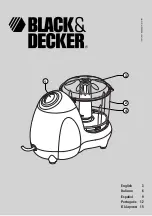
Serial Communication Interface (SCI)
Introduction
MOTOROLA
DSP56309UM/D 8-3
8.1
INTRODUCTION
The DSP56309 serial communication interface (SCI) provides a full-duplex port for serial
communication to other DSPs, microprocessors, or peripherals such as modems. The SCI
interfaces without additional logic to peripherals that use TTL-level signals. With a small
amount of additional logic, the SCI can connect to peripheral interfaces that have
non-TTL level signals, such as the RS232C, RS422, etc.
This interface uses three dedicated signals: transmit data (TXD), receive data (RXD), and
SCI serial clock (SCLK). It supports industry-standard asynchronous bit rates and
protocols, as well as high-speed synchronous data transmission. The asynchronous
protocols supported by the SCI include a multidrop mode for master/slave operation
with wakeup on idle line and wakeup on address bit capability. This mode allows the
DSP56309 to share a single serial line efficiently with other peripherals.
The SCI consists of separate transmit and receive sections that can operate
asynchronously with respect to each other. A programmable baud-rate generator
provides the transmit and receive clocks. An enable vector and an interrupt vector have
been included so that the baud-rate generator can function as a general purpose timer
when it is not being used by the SCI, or when the interrupt timing is the same as that
used by the SCI.
8.2
SCI I/O SIGNALS
Each of the three SCI signals (RXD, TXD, and SCLK) can be configured as either a GPIO
signal or as a specific SCI signal. Each signal is independent of the others. For example, if
only the TXD signal is needed, the RXD and SCLK signals can be programmed for GPIO.
However, at least one of the three signals must be selected as an SCI signal to release the
SCI from reset.
SCI interrupts can be enabled by programming the SCI control registers before any of
the SCI signals are programmed as SCI functions. In this case, only one transmit
interrupt can be generated because the transmit data register is empty. The timer and
timer interrupt operate regardless of how the SCI pins are configuredÑeither as SCI or
GPIO.
Summary of Contents for DSP56309
Page 25: ...xxii DSP56309UM D MOTOROLA Figure D 25 Port E Registers PCRE PRRE PDRE D 39 ...
Page 30: ...MOTOROLA DSP56309UM D 1 1 SECTION 1 DSP56309 OVERVIEW ...
Page 47: ...1 18 DSP56309UM D MOTOROLA DSP56309 Overview DSP56309 Architecture Overview ...
Page 48: ...MOTOROLA DSP56309UM D 2 1 SECTION 2 SIGNAL CONNECTION DESCRIPTIONS ...
Page 85: ...2 38 DSP56309UM D MOTOROLA Signal Connection Descriptions OnCE JTAG Interface ...
Page 86: ...MOTOROLA DSP56309UM D 3 1 SECTION 3 MEMORY CONFIGURATION ...
Page 104: ...MOTOROLA DSP56309UM D 4 1 SECTION 4 CORE CONFIGURATION ...
Page 124: ...MOTOROLA DSP56309UM D 5 1 SECTION 5 GENERAL PURPOSE I O ...
Page 125: ...5 2 DSP56309UM D MOTOROLA General Purpose I O 5 1 INTRODUCTION 5 3 5 2 PROGRAMMING MODEL 5 3 ...
Page 128: ...MOTOROLA DSP56309UM D 6 1 SECTION 6 HOST INTERFACE HI08 ...
Page 166: ...MOTOROLA DSP56309UM D 7 1 SECTION 7 ENHANCED SYNCHRONOUS SERIAL INTERFACE ESSI ...
Page 212: ...MOTOROLA DSP56309UM D 8 1 SECTION 8 SERIAL COMMUNICATION INTERFACE SCI ...
Page 241: ...8 30 DSP56309UM D MOTOROLA Serial Communication Interface SCI GPIO Signals and Registers ...
Page 242: ...MOTOROLA DSP56309UM D 9 1 SECTION 9 TRIPLE TIMER MODULE ...
Page 269: ...9 28 DSP56309UM D MOTOROLA Triple Timer Module Timer Operational Modes ...
Page 270: ...MOTOROLA DSP56309UM D 10 1 SECTION 10 ON CHIP EMULATION MODULE ...
Page 302: ...MOTOROLA DSP56309UM D 11 1 SECTION 11 JTAG PORT ...
Page 369: ...C 22 DSP56309UM D MOTOROLA DSP56309 BSDL Listing ...
Page 370: ...MOTOROLA DSP56309UM D D 1 APPENDIX D PROGRAMMING REFERENCE ...
Page 405: ......
Page 409: ......
















































